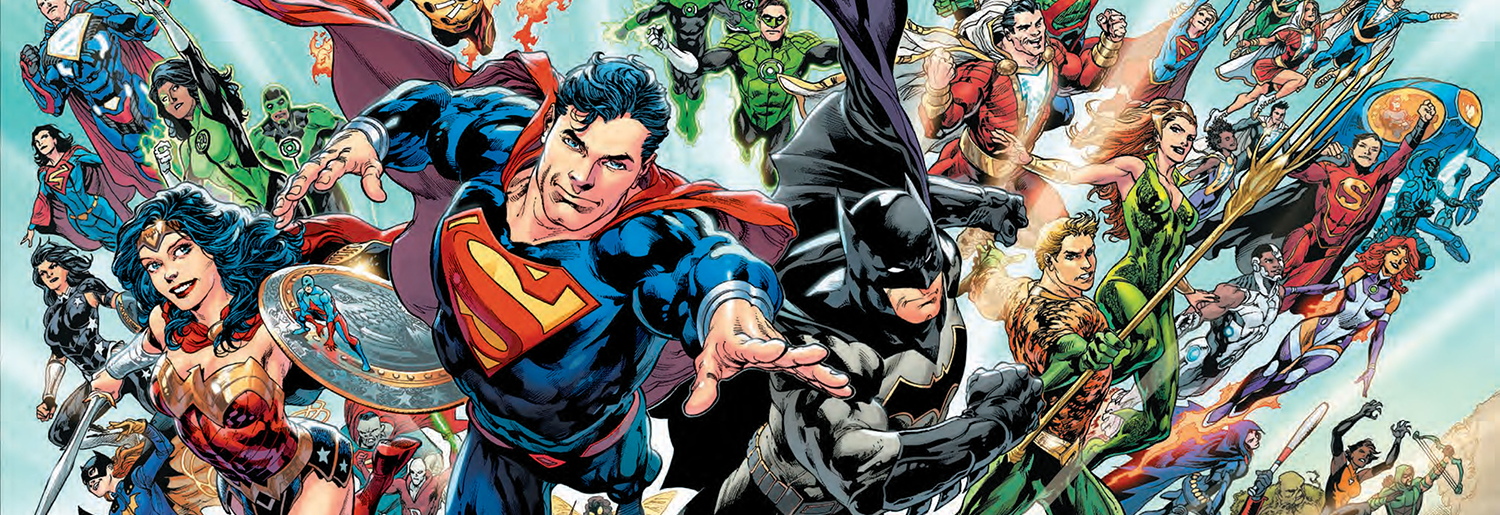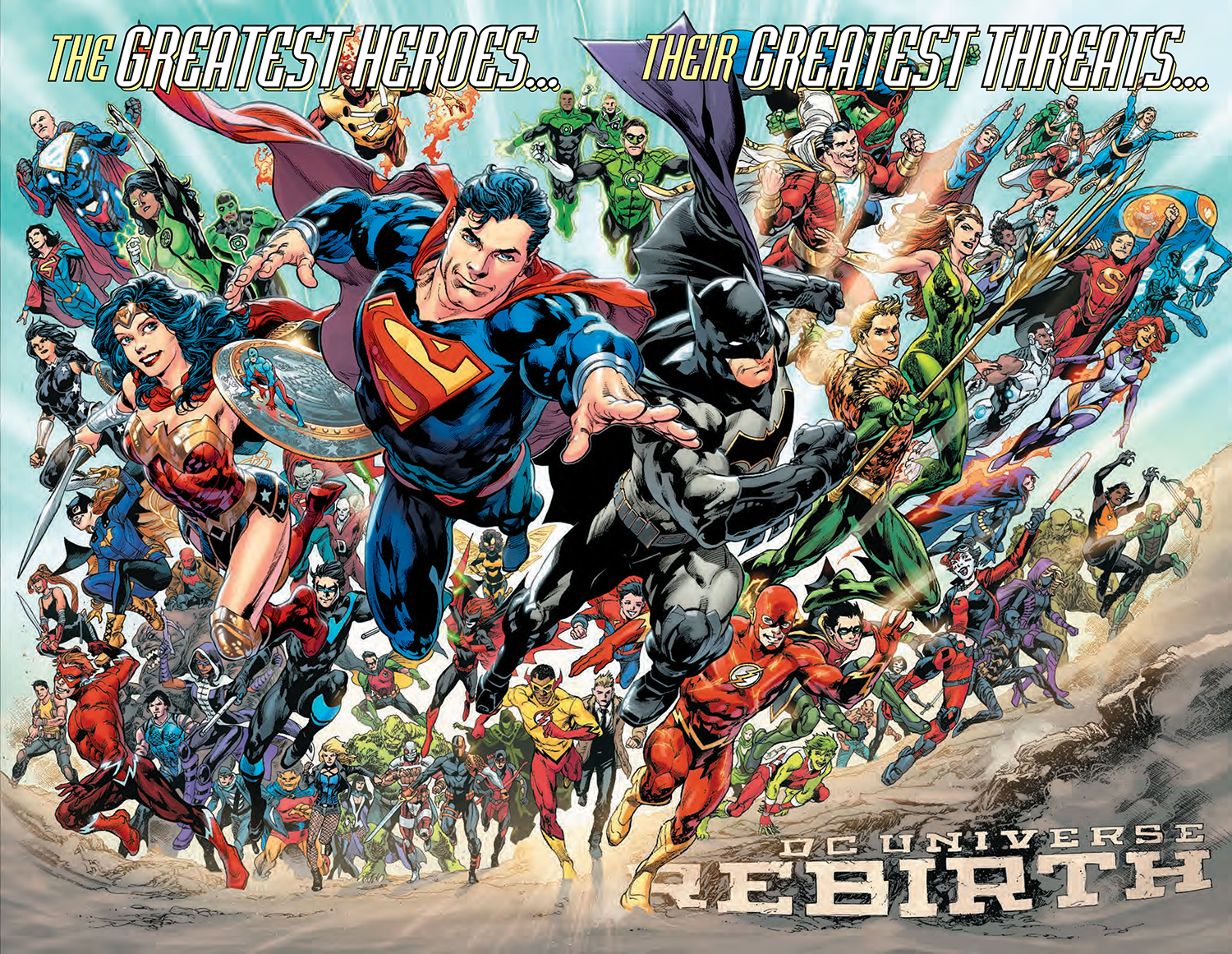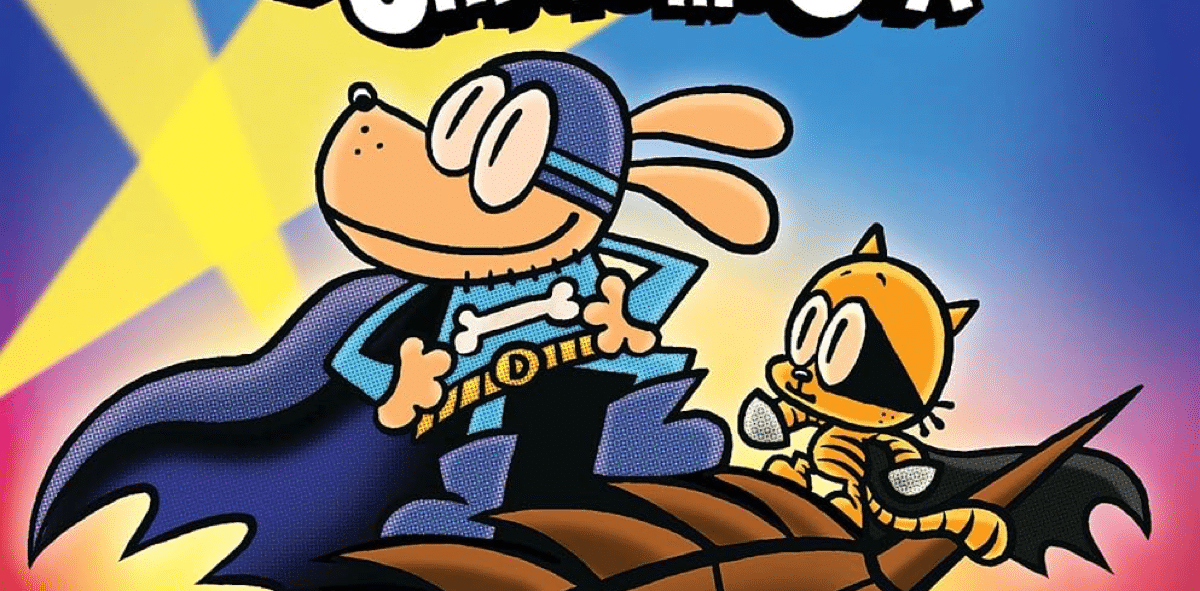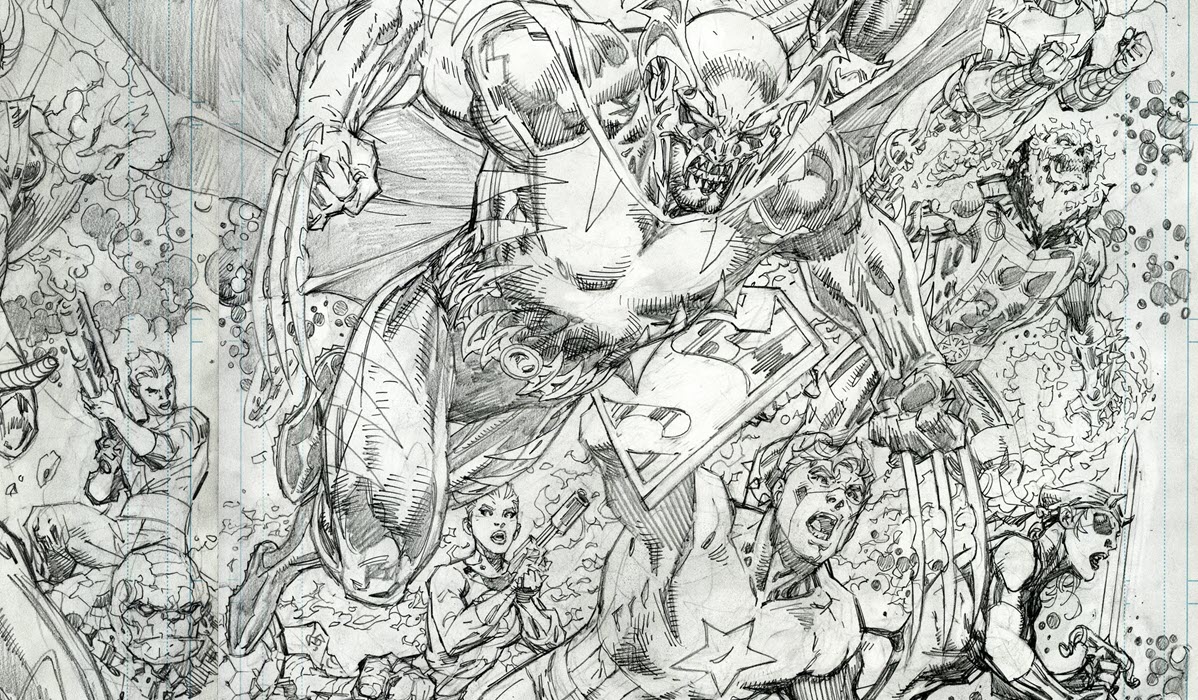ICv2 has its annual sit down with DC co-publishers Jim Lee and Dan DiDio and Kremlinologists will want to pour over every paragraph. In part 1, “DiLeeo” analyze the overall 13% drop in GN sales and tease their two upcoming graphic novel lines. DiDio:
We see a little more leveling that’s going on here. We were hoping the “Rebirth” trades would be a little more robust, but they are running extraordinarily strong, a little bit short of what the “New 52” trades did when we first launched with those.
Overall, our trade sales are where we expect them to be. You’re right, the breakout of DC Super Hero Girls is exciting for us because that’s an initiative that we want to follow up on. Next year, we’re going to be looking to go more aggressively in the original graphic novel business, both for the young adults and for a more mature audience.
Lee also points out that DC’s backlist is primarily powered by the 80s backlist, and it’s time to get back to that thinking:
Similarly, we have looked at a different segment of the audience. A lot of our best‑selling backlist were books produced in the 80s. These are done by high‑end creators, typically out of continuity, featuring our most iconic characters in stories that have beginnings and ends and have very different kinds of formats and coloring approaches.
It allows us to tap into the creators that don’t have the capability of doing a monthly book or don’t want to do a monthly book that’s tied into continuity, and have to play within those parameters. We feel that there’s a real opportunity to produce these high‑end, prestige material books featuring high‑end creators. That’s something that we are also actively exploring.
In Part 2 the co-pubs look at changing demographics, and Lee even hazards a guess:
What is the current demographic of the audience reading DC across channels compared to what it was five years ago?
Didio: It’s interesting. It’s shifted a bit. We have seen an influx of female readers. We had a discussion with some of our sellers, like Barnes & Noble and our Random House reps, and we’re seeing a larger infusion of female readers in the bookstore markets. We’re seeing some of it in the direct market, but I think we’re seeing a better growth with graphic novels with female readership. DC Super Hero Girls, naturally, is off the charts for that, as well.
Lee: We have information from our digital sales, for example. We will have some titles -‑ and I want to say it was Smallville ‑- that track as high as 40% female, or at least the people that were purchasing the content through their accounts.
I have information, my own anecdotal information like my Instagram account — 270,000 followers. I don’t know how of many of those actually read comic books, but they break down male/female, and that’s about 85/15.
If I had to hazard a guess, I feel very confident that that number [the percentage of female readers of DC] is between 15 and 40%.
Obviously that’s a huge 25% range, but also in line with Brett Schenker’s FB analysis that’s we’ve run here many times.
Also discussed: the relative success of Wonder Woman trades after the movie. The co-pubs point out that even if it wasn’t as big a jump as The Killing Joke, which surged as the Suicide Squad movie was coming out even though it had nothing to do with it, the jump was still a jump, even if relative. Preacher and Flash have also seen jumps based on TV exposure.
As a long time Kremlinologist, one of the biggest shifts I see in all this is DiDio’s acceptance of the graphic novel format. A few years back, when the Earth One gn line was announced, the format bounced back and forth because DiDio wasn’t convinced that GNs were as viable as a periodical launch. The Earth One books have been surprise hits however, and the numbers are pretty undeniable now.
A question that’s of interest to me only, perhaps: The 80s classics – Killing Joke, Watchmen, Dark Knight, even Arkham Asylum – were driven by protean talents in the flush of youthful creativity who changed everything about the way superhero comics were perceived. Do we have a similar talent pool today? We definitely have some incredibly talented creators but giving them the keys to the car to take Batman on a terrifying joy ride won’t be as easy today. In 1984 DC’s characters were a clannish backwater of Warner Bros. Today they’re the pillar of the company’s brand.
Also, creators are hampered by having everything available all at once via constant web bombardment. Singular visions are often drowned out by the sheer force of the information era.
That said, when someone does hit it on the nose for an audience that’s 40 years down the road, it will be incredible.










Hrm, actually I thought the most important bit in this interview was about the “Dark Matter” books (NEW CHALLENGERS, DAMAGE, IMMORTAL MEN, SIDEWAYS, THE SILENCER, THE TERRIFICS, more?) : “All these talents are participating in the books, whether that’s creator-owned, or taking equity positions. ” — several of those titles are long-standing DC IP, so giving equity for reinvention (“The Gaiman deal”… which I’m not certain any other creator has every publicly received?) seems like a major change at DC to me? And the quote seems to imply that some of them might even be “creator-owned”, wha?!?
-B
Yeah, that is an interesting point about the creator investment in Dark Matter books. Hopefully it will inspire some creativity. Having now read comics and followed stories about the industry for 6 years, it’s interesting to see many of the changes in that time. It doesn’t surprise me that graphic novel sales are seeing their biggest growth in the commercial book market. The Barnes and Noble comic sections are bigger than ever, Wal-Mart and Target have graphic novels next to superhero movies, Amazon will recommend any number of books based on your interests and purchases. It’s got to be a lot harder to promote that type of growth in a direct market store, where the primary client is interested in periodicals. Here’s to hoping for continued growth across the market landscape!
It seems weird that only now are they realising they’re still dining out on books from 30 odd years ago. Why the big 2 don’t have parallel publishing of periodicals mixed with prestige books to hit different markets is beyond belief.
i guess so. not only Dc comics, overall more girls readers than boys. cannot wait to read dark nights metal. already got a whole set of Dustin Nguyen variant. yes, color plus B&W. just don’t understand, why B&W costs so much more than color version
“just don’t understand, why B&W costs so much more than color version”
These are manufactured collectibles so “rarity”. B&W has a lower print run compared to colored (1500 vs 3000). That said, even the color versions have high profit margins to begin with – around 400% markup. Granted, ordering 1500/3000 copies of one comic is a fairly risky endeavor and I reckon the possibility of not selling out is factored into the pricing.
Comments are closed.